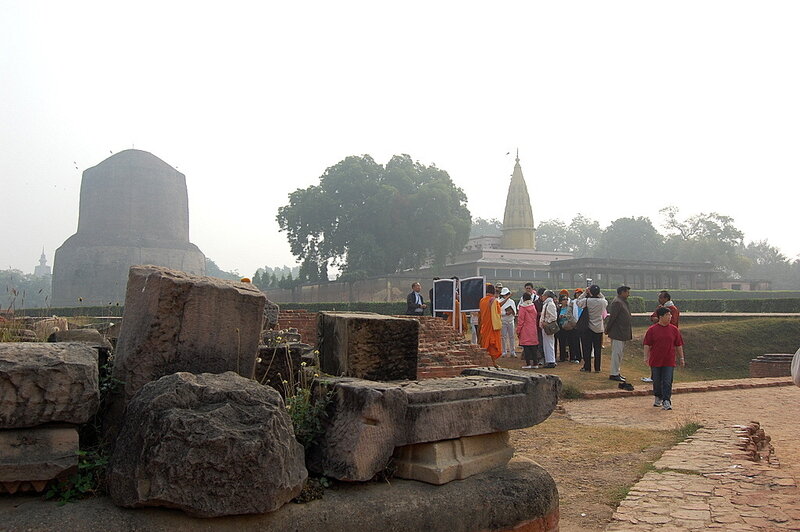He sent me some photos ( inedit!!! Only for my blog!!!! I'm incredibly proud -unfortunatelly he forgot the description of the photos... but I think it's Bodh Gaya)
No,
Bodh Gaya is the place of Enlightenment of Buddha
Lumbini is the place where the Buddha was born.
and this mail:
Dear Liudmila,Sarnath.The Dhamekha stupa is considered to be the sacred place where Buddha began to teach with the first discourse on the 'Wheel of Law'.The present size of the stupa is 31.3 m high and 28.3 m in diameter. (source)
I read somewhere that a pilgrimage is a journey to a sacred place as an act of devotion and faith. In Buddhism, faith or Saddha shouldn't be blind or based on wrong view. The confidence on the religion has to be professed based on understanding of that religion. A pilgrimage is also all about the mental aspect. The physical part is easily taken care by any travel company and would satisfy any normal tourist seeking the pleasure of sightseeing and enjoyment.In a pilgrimage however, the sight of holy shrines and the veneration or reverence of the pilgrims for them, do not arouse craving but wholesome mental states such as Right Thought, Right Speech and Right Action. I was lucky thus to be invited by a friend to join a Buddhist group on a pilgrimage to North India, visiting some of the important Buddhist sites there, most notably Lumbini, Bodhgaya, Sarnath and Kusinara which form the four holy places of pilgrimage and Sarvvasthi, Rajgir and Vaishalli which together with Sankasia, are the four places of principal miracles. Do check out my travel blog and have a serving of a Buddhist pilgrimage at Travel Pangs!

 Maya Devi, his mother, gave birth to the child on her way to her parent's home in Devadaha while taking rest in Lumbini under a sal tree in the month of May in the year 642 B.C. In 249 BC, when the Emperor Ashoka visited Lumbini constructed four stupas and a stone pillar with a figure of a horse on top. (source)
Maya Devi, his mother, gave birth to the child on her way to her parent's home in Devadaha while taking rest in Lumbini under a sal tree in the month of May in the year 642 B.C. In 249 BC, when the Emperor Ashoka visited Lumbini constructed four stupas and a stone pillar with a figure of a horse on top. (source)


No comments:
Post a Comment